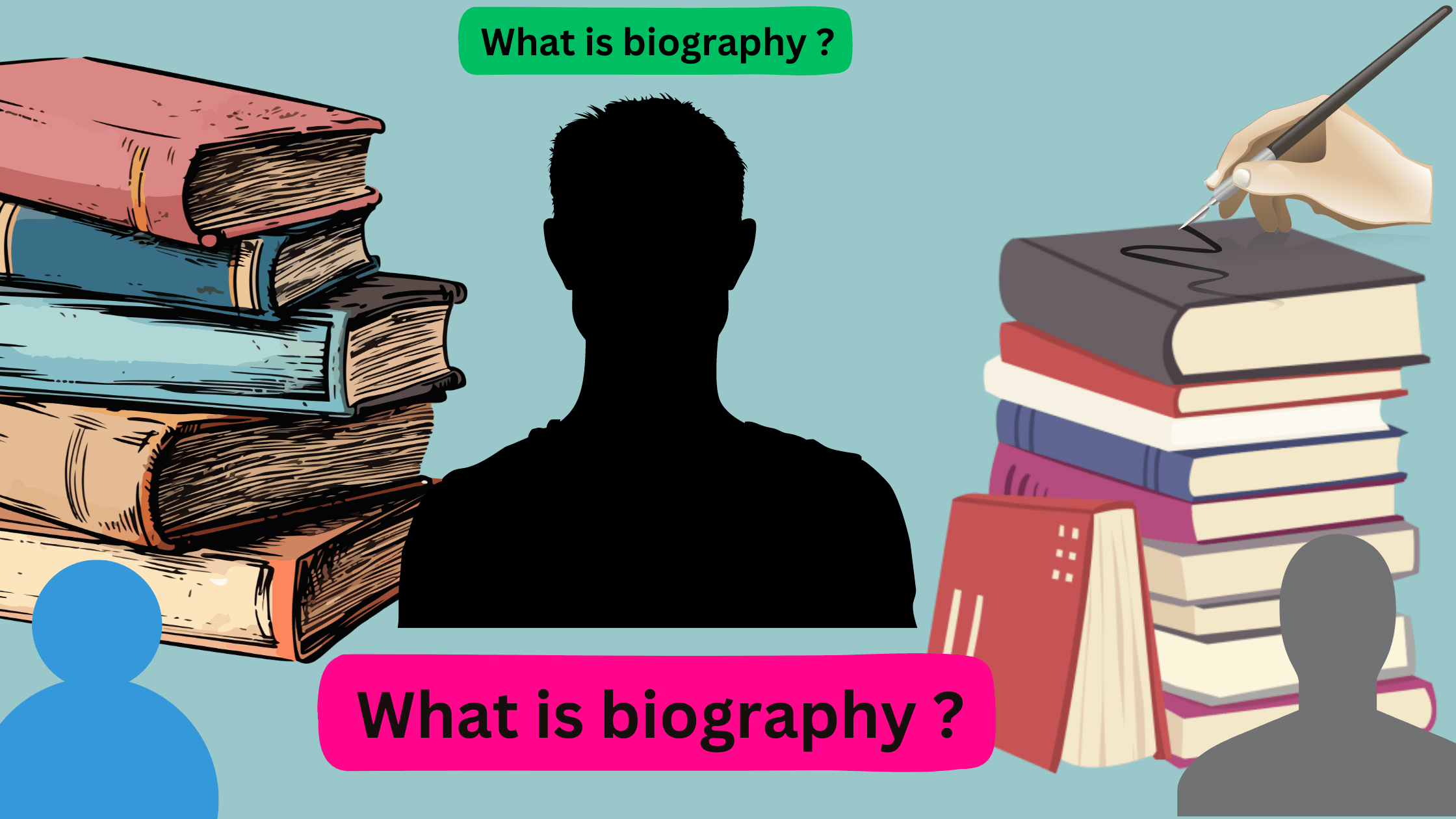How to Write a Biography That Engages Readers from the Start
Are you ready to captivate your readers with an irresistible biography? Crafting a compelling biography is an art that requires a delicate balance of storytelling and factual accuracy. In this article, we will show you how to write a biography that grabs your readers’ attention right from the start and keeps them engaged till the very end.
Whether you’re writing a biography for a personal project or a professional endeavor, it’s crucial to understand the power of a captivating introduction. We’ll share expert tips and techniques to help you create an opening that hooks your readers and leaves them wanting more.
By incorporating key details, showcasing the subject’s unique qualities, and injecting an emotional element, your biography will come to life and resonate with your audience. We’ll also delve into the importance of research, choosing the right tone, and structuring your biography effectively.
So, if you’re ready to embark on a journey of storytelling mastery, let’s dive into the art of writing a biography that engages readers from the very beginning. Get ready to make a lasting impression with your prose and create a biography that will leave a lasting impact.
The importance of a captivating biography
Crafting a biography that engages readers from the beginning is crucial for capturing their attention and keeping them invested in the story. A captivating biography has the power to transport readers into the subject’s world, allowing them to connect with the individual on a deeper level. When done effectively, a biography can inspire, educate, and even transform the way readers perceive the subject.
In today’s fast-paced digital landscape, where content competes for our limited attention, a compelling biography stands out as a way to leave a lasting impression. Readers are drawn to stories that feel authentic, personal, and emotionally resonant. By creating a biography that strikes the right balance between factual information and compelling storytelling, you can create a work that captivates and enlightens your audience.
The importance of a captivating biography lies in its ability to humanize the subject, revealing their unique experiences, challenges, and triumphs. A well-crafted biography can shed light on the subject’s motivations, passions, and the factors that shaped their life and legacy. This level of insight not only satisfies the reader’s curiosity but also encourages them to reflect on their own lives and the broader human experience.
Understanding your target audience
Before you begin writing a biography, it’s crucial to understand your target audience. Who are you writing for, and what are their expectations? Are you crafting a biography for a specialized academic audience, a general readership, or a specific demographic? Knowing your audience will inform the tone, language, and level of detail you incorporate into your writing.
When writing for a general audience, the focus should be on creating a narrative that is engaging, accessible, and easy to follow. Avoid overly technical jargon or academic language that may alienate readers. Instead, strive to strike a balance between informative content and a conversational, relatable tone. Incorporate anecdotes, personal insights, and vivid descriptions to bring the subject’s life to life.
For a more specialized audience, such as scholars or enthusiasts of a particular field, the biography may require a more in-depth and nuanced approach. In this case, you’ll need to delve deeper into the subject’s background, achievements, and the historical context in which they lived. Ensure that your research is thorough and that you present information in a way that is both informative and intellectually stimulating for your target readers.
Regardless of the audience, a captivating biography should always aim to humanize the subject and make their story relatable. By understanding the needs and expectations of your readers, you can craft a biography that resonates with them on a personal level and leaves a lasting impression.
Researching the subject of the biography
Thorough research is the foundation of a compelling biography. To create a well-rounded and accurate portrayal of your subject, you’ll need to delve into their life, exploring the various facets that shaped their journey. This research process should involve a combination of primary and secondary sources, allowing you to uncover both the factual details and the personal stories that bring the subject to life.
Start by gathering as much information as possible about your subject, from biographical accounts and historical records to personal interviews and archival materials. Scour through newspapers, magazines, and online resources to gather a comprehensive understanding of your subject’s background, achievements, and the socio-political context in which they lived.
If possible, conduct interviews with individuals who were close to your subject, such as family members, friends, colleagues, or mentors. These firsthand accounts can provide invaluable insights into the subject’s personality, motivations, and the pivotal moments that defined their life. Remember to approach these interviews with empathy and respect, as you are delving into the personal experiences of your subject and those closest to them.
As you delve deeper into your research, be sure to keep meticulous notes and organize your findings in a way that allows you to easily reference and synthesize the information. This will not only help you craft a cohesive and well-structured biography but also ensure that you accurately represent the subject’s life and legacy.
By investing the time and effort into thorough research, you’ll be able to create a biography that is rich in detail, nuance, and authenticity, captivating your readers from the very first page.
Crafting a compelling opening paragraph
The opening paragraph of a biography is your chance to hook the reader and draw them into the subject’s story. This crucial section sets the tone for the entire work and should be crafted with the utmost care and attention to detail.
Begin by considering the most compelling aspect of your subject’s life – their most significant achievement, a pivotal moment that shaped their journey, or a unique characteristic that sets them apart. Use this as the foundation for your opening paragraph, crafting a vivid and captivating introduction that immediately piques the reader’s interest.
Avoid starting with a generic or formulaic statement, such as “John Doe was born on [date] in [location].” Instead, consider opening with a striking anecdote, a powerful quote, or a vivid description that immediately immerses the reader in the subject’s world. This approach helps to establish an emotional connection and a sense of anticipation, encouraging the reader to continue exploring the biography.
Ensure that your opening paragraph is concise, yet impactful. Resist the temptation to cram too much information into this section, as it can overwhelm the reader and dilute the impact of your introduction. Instead, focus on selecting the most captivating and relevant details that will draw the reader in and leave them eager to learn more.
Remember, the opening paragraph sets the tone for the entire biography. By crafting a compelling and engaging introduction, you’ll captivate your readers from the very start and pave the way for a truly immersive and memorable reading experience.
Structuring the biography effectively
Structuring a biography effectively is crucial for guiding the reader through the subject’s life in a logical and engaging manner. While there is no one-size-fits-all approach, there are several best practices to consider when organizing your biography.
Begin by establishing a clear and chronological narrative. Start with the subject’s early life, including their birth, upbringing, and formative experiences. Then, gradually progress through their key milestones, achievements, and pivotal moments, weaving a cohesive story that allows the reader to follow the subject’s journey.
Within this chronological framework, consider incorporating thematic sections or chapters that focus on specific aspects of the subject’s life, such as their career, personal relationships, or the societal or historical context in which they lived. This approach helps to provide depth and nuance to the biography, allowing the reader to gain a more comprehensive understanding of the subject.
Intersperse the factual information with personal anecdotes, quotes, and vivid descriptions to add depth and emotional resonance to the narrative. This balance between objective facts and subjective experiences helps to humanize the subject and make their story more relatable to the reader.
As you structure the biography, be mindful of pacing and transitions. Ensure that the narrative flows smoothly, with seamless transitions between sections and a natural progression of events. This will enhance the reader’s engagement and prevent them from feeling disjointed or overwhelmed by the information presented.
Highlighting significant milestones and achievements
One of the key elements of a captivating biography is the ability to highlight the subject’s significant milestones and achievements in a way that resonates with the reader. These pivotal moments not only showcase the subject’s accomplishments but also provide insight into the factors that shaped their life and legacy.
When highlighting these milestones, consider the broader context in which they occurred. How did the subject’s achievements or challenges reflect the zeitgeist of their era? How did they contribute to or challenge the societal norms and expectations of their time? By providing this contextual information, you can help the reader better understand the significance and impact of the subject’s life.
In addition to the subject’s major accomplishments, don’t overlook the importance of smaller, more personal achievements or moments of triumph. These can include overcoming personal obstacles, pursuing a passion or dream, or making a positive impact on the lives of others. By weaving these stories into the narrative, you can create a more well-rounded and relatable portrait of your subject.
When highlighting these significant events, use vivid and descriptive language to bring the moments to life. Incorporate sensory details, dialogue, and emotive language to help the reader visualize the scene and connect with the subject’s experiences on a deeper level. This approach can transform a list of accomplishments into a captivating and immersive reading experience.
By thoughtfully selecting and presenting the subject’s most significant milestones and achievements, you can create a biography that not only informs but also inspires and captivates your readers.
Incorporating personal anecdotes and stories
Biographical writing is not just about recounting the facts and achievements of a subject’s life; it’s about capturing the essence of their humanity and allowing the reader to connect with them on a personal level. Incorporating carefully selected personal anecdotes and stories can be a powerful way to achieve this.
When choosing which anecdotes and stories to include, consider those that shed light on the subject’s personality, values, and the unique experiences that shaped their journey. These intimate glimpses into the subject’s life can humanize them, making them more relatable and compelling to the reader.
Carefully weave these personal narratives into the larger chronological structure of the biography, using them to punctuate and enhance the factual information. This approach helps to create a more well-rounded and engaging portrait of the subject, allowing the reader to gain a deeper understanding of their motivations, struggles, and triumphs.
When crafting these personal stories, strive for a balance between vivid description and concision. Avoid excessive detail that may detract from the narrative flow, but ensure that you provide enough context and emotional resonance to captivate the reader. Use dialogue, sensory details, and emotive language to bring these moments to life and foster a stronger connection between the reader and the subject.
By incorporating thoughtfully selected personal anecdotes and stories, you can create a biography that not only informs but also inspires and entertains your readers, leaving a lasting impression and a deeper understanding of the subject’s life and legacy.
Showcasing the subject’s personality and values
A captivating biography goes beyond simply recounting the facts of a person’s life; it should also aim to capture the essence of the subject’s personality and the values that guided their actions and decisions. By showcasing these unique qualities, you can create a more well-rounded and compelling portrait that resonates with your readers.
Begin by delving into the subject’s character traits, quirks, and distinctive mannerisms. How did they interact with others? What were their passions and interests? What were their strengths, weaknesses, and the personal struggles they faced? Weaving these details into the narrative can help to bring the subject to life and make them more relatable to the reader.
In addition to the subject’s personality, consider highlighting the values and principles that shaped their life and legacy. What were the driving forces behind their actions and decisions? How did their beliefs and ideals influence the choices they made? Exploring these aspects can provide valuable insights into the subject’s motivations and the factors that defined their character.
When presenting this information, avoid dry, factual recitations. Instead, strive to integrate these details seamlessly into the storytelling, using vivid descriptions, anecdotes, and dialogue to bring the subject’s personality and values to life. This approach can help to create a more engaging and memorable reading experience, leaving a lasting impression on the reader.
By showcasing the subject’s unique personality and the values that guided their life, you can craft a biography that not only informs but also inspires and captivates your audience, fostering a deeper connection and a greater understanding of the subject’s legacy.
Editing and proofreading your biography
As you near the completion of your biography, the final step in the writing process is to thoroughly edit and proofread your work. This crucial stage ensures that your biography is polished, coherent, and free of errors, allowing your subject’s story to shine through without any distractions or inconsistencies.
Begin by carefully reviewing your manuscript, reading it with a critical eye and a fresh perspective. Look for any areas where the narrative may feel disjointed, the pacing is off, or the language could be tightened and refined. Consider the overall flow and structure of the biography, making adjustments as needed to ensure a seamless and engaging reading experience.
Pay close attention to the accuracy of your facts, dates, and details. Double-check your research and sources to ensure that you have faithfully represented the subject’s life and achievements. Catch any inconsistencies or discrepancies and make the necessary corrections to maintain the integrity of your work.
In addition to the factual elements, scrutinize your writing for any grammatical errors, spelling mistakes, or stylistic issues. Ensure that your language is clear, concise, and free of any unnecessary jargon or technical terminology that may alienate your readers. Consider seeking the input of a trusted editor or proofreader to provide a fresh perspective and catch any oversights you may have missed.
By dedicating the time and attention to meticulous editing and proofreading, you can elevate your biography to a polished, professional, and engaging work that does justice to your subject’s life and legacy. This attention to detail will leave a lasting impression on your readers and solidify your reputation as a skilled biographer.
Creating a biography that leaves a lasting impression
Crafting a captivating biography that engages readers from the start is a true art form, requiring a delicate balance of thorough research, compelling storytelling, and a deep understanding of your subject. By following the strategies and techniques outlined in this article, you can create a biography that not only informs but also inspires and captivates your audience.
Remember, the key to a successful biography lies in your ability to bring your subject to life, revealing their unique personality, values, and the pivotal moments that shaped their journey. By incorporating personal anecdotes, vivid descriptions, and a well-structured narrative, you can transport your readers into the world of your subject, fostering a deeper connection and a lasting impression.
As you embark on the journey of writing a biography, stay true to your subject’s story and let their authentic voice shine through. Embrace the power of research, the art of storytelling, and the importance of attention to detail. With dedication and a passion for your craft, you can craft a biography that will leave an indelible mark on your readers, inspiring them to explore the lives of remarkable individuals and the legacies they have left behind.
So, whether you’re writing a biography for a personal project or a professional endeavor, keep these principles in mind and let your creativity and storytelling prowess shine. With each word you write, you have the opportunity to captivate, educate, and transform your readers, leaving a lasting impression that will resonate long after the final page is turned.


